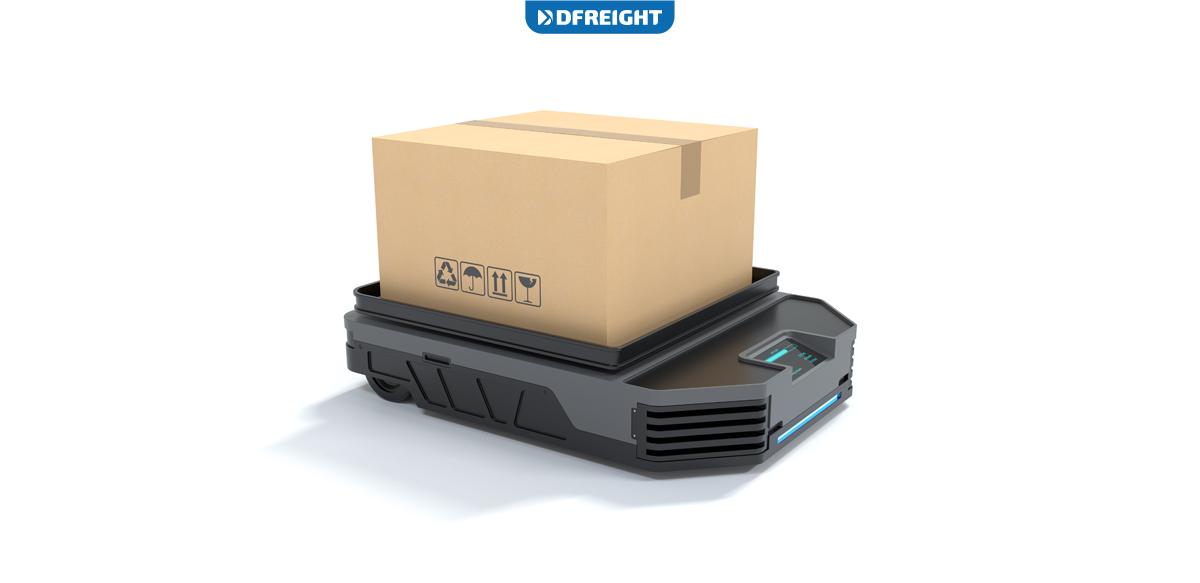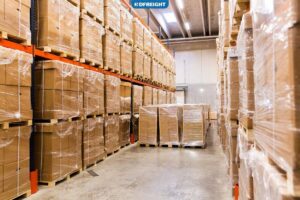The modern world is busy, and people are always on the go. As such, there is a great need for efficient modern transportation. Cars are the most popular form of transport, but many other options are available, such as buses, trains, and planes. With the advent of new technologies, such as ride-sharing apps and electric cars, the way we get around is constantly evolving. Logistics is a vital part of the modern world. Without it, businesses would not be able to move their goods around the globe. In this article, you learn about evaluating modern transportation and methods to modernize your business.
Table of Contents
The Role of Transportation in Business
Modern transportation has its roots in military logistics, which has a long and storied history. The term “logistics” was first coined by the ancient Greeks, who used it to describe the science of transporting armies and supplies. In the modern world, logistics has come to encompass the coordination of all aspects of a supply chain, from raw material acquisition to delivery of the finished product to the client.
Transportation is a critical function in today’s global economy, and it is only getting more complex as businesses expand their operations into new markets. The challenge for companies is to find the most efficient and cost-effective way to get their products to market. This is where modern logistics come in. Using the latest technology and data analysis, businesses can optimize their supply chains and get their products to market faster and at a lower cost. Logistics is a complex and ever-changing field, but companies must understand the basics to stay ahead of the competition.
The role of logistics in business is to ensure smooth and efficient operations. Logistics is responsible for transporting and storing goods and coordinating information between different parts of the supply chain. Excellent and modern transportation management is essential for businesses to compete in today’s global marketplace. Logistics plays a vital role in the success of companies, and its importance is only increasing as the world becomes more interconnected. In a globalized economy, businesses need to be able to move goods quickly and efficiently to meet customer demand. They also need to be able to track goods and information throughout the supply chain to ensure that everything is running smoothly.
Good logistics management can help businesses save money, time, and resources. It can also help them to improve customer satisfaction and gain a competitive advantage. Logistics has many different aspects, and it is a complex field. However, understanding the basics of modern transportation is essential for any business that wants to be successful in today’s marketplace.
The Evolution of Modern Transportation
The term “logistics” was first coined in the early 19th century by the French military leader, Baron de Jomini. He defined it as “the art of moving armies.” During World War II, the U.S. military adopted the word ” logistics ” to describe the process of supplying troops with food, fuel, and ammunition. In the 1950s, the U.S. military began using computers to track the movement of supplies, and the term “logistics” began to be used in business and industry. Today, logistics are essential to the success of companies of all sizes. It is the process of planning, implementing, and controlling the efficient and effective flow of goods, services, and information from the point of origin to the end of consumption.
The development of the automobile and the railway in the 19th century made it possible to move goods and materials quickly over long distances. In the 20th century, the development of air travel and containerization revolutionized the logistics industry.
The evolution of modern transportation has been shaped by the ever-changing needs of businesses and the advancement of technology. Logistics is a field that has roots in ancient times, but it has undergone a dramatic transformation in recent history. The development of modern transportation and communication infrastructure has made it possible for businesses to operate globally. As companies have become more global, the need for efficient and reliable logistics has increased.
Technology has played a significant role in the evolution of logistics, with new tools and systems making it possible to manage the supply chain more effectively. The future of logistics is likely to be shaped by the continued advancement of technology. New tools and systems will continue to make it possible to manage the supply chain more effectively and to meet the ever-changing needs of businesses.
Signs of Modernization
Modern transportation has become an increasingly important part of business operations in recent years. Companies are turning to logistics modernization as they strive to improve their supply chain management and efficiency. The globalization of the economy is likely to continue, and businesses will need to be able to operate on a global scale. This will require efficient and reliable logistics. Sustainable practices are likely to become increasingly important as businesses and consumers become more aware of the environmental impact of their supply chains. Modern logistics providers will need to find ways to minimize the environmental impact of their operations. There are several signs that logistics is undergoing a modernization process:
- One sign of logistics modernization is the increased use of technology. Companies use sophisticated software to track inventory, manage shipments, and optimize routes. They are also using technology to automate tasks and improve communication between different parts of the supply chain.
- Another sign of logistics modernization is the growth of third-party logistics providers. These companies specialize in managing supply chains and can provide various services, such as transportation, warehousing, and order fulfillment. As companies look to improve their logistics operations, they turn to these third-party providers for help.
- There is also a trend towards collaboration between different parts of the supply chain. In the past, companies often operated in silos, with little communication or coordination between various departments. However, as logistics have become more complex, companies realize the benefits of working together. They are sharing information and working towards common goals.
- Finally, we see a change in how other parts of the business view logistics. In the past, logistics were often seen as a necessary but unglamorous part of the business. However, as companies have come to rely on logistics for their operations, it is becoming more strategic. It is a critical part of business, and companies are investing more in it.
The first item is an important issue that has many sub-categories. We’ll now look at some of these subsets individually and in detail.
Internet of Things (IoT)
The Internet of Things (IoT) refers to a ubiquitous network of physical devices connected to the internet. These embedded systems can collect, process, and act on data in real-time. IoT applications can improve a variety of industries by making their operations more efficient and lowering costs. This system can improve the efficiency and accuracy of modern transportation processes by automating them. For example, IoT can be used to track the location of goods, measure the performance of employees, and detect and prevent failures.
IoT can be used in modern transportation to improve efficiency by automating tasks. For example, IoT can be used to automate the tracking of goods. This can help to ensure that the goods reach their destination promptly. In addition, IoT can be used to automate the process of employee performance assessment. This can help to identify areas where employees need improvement and to implement corrective measures.
However, some challenges must be mitigated when using IoT in modern transportation. For example, privacy concerns need to be addressed. Additionally, some businesses may prohibit acquiring and installing the necessary devices. Additionally, data security concerns need to be addressed.
The IoT is a valuable tool that can be used to improve efficiency and accuracy in the modern transportation process. However, some challenges need to be addressed. By understanding these challenges and addressing them, businesses can maximize IoT’s benefits.
Automated Guided Vehicles (AGVs)
The development of automated guided vehicles (AGVs) for modern transportation has been a rapidly growing trend in the last few decades. AGVs are machines that can navigate autonomously around warehouses and distribution centers, which makes it easier for delivery personnel to move goods between storage areas and customer locations. They also improve safety by reducing the number of injuries caused by human error while moving inventory. The benefits of using AGVs in modern logistics include cost reductions, improved efficiency, increased yield from warehouse space, reduced greenhouse gas emissions, and more reliable supply chains.
Automated guided vehicles, or AGVs, are a type of machine used to transport goods. AGVs are usually smaller, unmanned machines guided by GPS or other navigation systems. AGVs have many benefits for modern transportation, including decreased noise and air pollution, faster loading and unloading, and increased efficiency.
AGVs are used to reduce freight transportation time and costs. They can move large quantities of cargo quickly and efficiently, making the modern transportation process more efficient. Additionally, repeat cargo runs are possible because the shipment is processed and transferred in a controlled and monitored environment. This eliminates the need to set up and tear down transportation systems, reducing the time and money needed for logistics. Watch this video to understand how this option works:
There are some potential problems with using AGVs in modern transportation. For example, AGVs are not equipped to handle challenging or dangerous cargo. Additionally, AGVs can damage delicate or expensive cargo. However, these risks can be managed using proper safety protocols and training for the operators. Automated guided vehicles are a valuable tool in modern transportation. Their fast processing and transport speeds make them a practical option for reducing freight transportation time and costs. Their ability to move large quantities of cargo quickly and efficiently makes them an essential part of a modern logistics system.
Warehouse Management Systems (WMS)
A warehouse management system (WMS) is a software solution that manages inventory and operations in warehouses and distribution centers (D.C.). WMS functionality can be divided into three general categories: inventory management, work execution, and reporting. A warehouse management system (WMS) is a software application that helps control and manage the day-to-day operations in a warehouse. WMS software guides inventory receiving and put-away, optimizes picking and shipping of orders and advises on inventory replenishment.
A warehouse management system can be a standalone application or part of an Enterprise Resource Planning (ERP) system to provide real-time visibility, analytics, and insights into the supply chain process to create efficiencies and avoid issues like over/understocking and lost revenue due to out-of-stocks. It can also work with integrated modules such as accounting, order management, inventory management, MRP, customer relationship management (CRM), and more using one central system and data source.
RFID Technology
Radio-frequency identification (RFID) is an emerging technology that has the potential to revolutionize modern transportation operations. RFID is a security and tracking technology that uses electromagnetic radiation to tag and track items. RFID tags are tiny objects attached to various things, most notably items of value, like products in a store. RFID tags send and receive electronic signals that sensors can read. This technology has been widely used in both the commercial and industrial sectors and has several advantages and disadvantages.
| Pros | Cons |
| Small size | Can be corrupted by electromagnetic radiation |
| Lightweight | |
| Cheap |
Cloud Computing
Cloud computing is a way of providing information technology (I.T.) services using remote computing services. It is a model in which data and applications are stored on an on-demand infrastructure rather than on dedicated hardware. This reduces the need for data center resources and increases the agility and scalability of business applications. Cloud computing also allows enterprises to tap into the power of the internet to manage their applications and data.

The modern transportation industry is one of the most adaptable and fastest-growing industries. Cloud computing can help modern transportation companies save money on operating expenses, improve customer service, and increase the speed of processing orders. With the ability to process orders quickly and easily, logistics companies can improve the timeliness and accuracy of their deliveries. In addition, cloud computing can help logistics companies reduce their workload and staff costs.
Supply Chain Management Software
Supply Chain Management (SCM) software is a computer application that helps companies manage their global supply chains. SCM software can help organizations improve inventory accuracy, reduce supplier costs, and optimize shipment routing. In addition, SCM software may also provide visibility into a potential warranty or quality issues before they happen, providing valuable early warning signals to management teams. It is responsible for planning, coordinating, and monitoring the flow of goods and information through an organization to meet customers’ needs and achieve organizational goals.
Essentially, companies use SCM software solutions to create a better brand experience by providing transparency, optimizing logistics, and being more responsive to customers. To maximize the benefits of using supply chain management software, it is crucial to identify the organization’s specific needs and choose the software that best meets those needs.
Artificial Intelligence in Modern Transportation
Artificial Intelligence (A.I.) deals with applying computer sciences to tasks that would be difficult for humans, such as understanding natural language or recognizing objects. A.I. has been used in logistics for several years now, and its applications are overgrowing.
Artificial intelligence has significantly impacted modern transportation over the last few years and is set to continue to do so in the future. What is artificial intelligence, and why is it crucial in modern logistics? Artificial intelligence is a computer system that can be trained to perform tasks usually carried out by humans, such as recognizing and responding to objects, acknowledging and understanding spoken words, and making decisions. These tasks are known as “intelligent actions.”
A.I. has the potential to improve the efficiency and accuracy of modern transportation by automating processes and functions that humans currently carry out. For example, algorithms can optimize routes and shipping schedules, determine which items to ship and when, and identify and prevent risks like theft. In addition, A.I. can be used to improve customer service by automating call center operations.
However, A.I. isn’t without its challenges. First, AI can be unreliable and tends to make mistakes. Second, implementing A.I. may require significant changes in how operations are conducted, which can be disruptive to businesses. Finally, even if A.I. is successfully implemented, it will likely require continual updates and refinement to remain effective.
The impact of artificial intelligence on modern transportation is evident and is set to continue to grow in the future. It can potentially improve the efficiency and accuracy of operations and can be used to automate customer service and call center operations. However, the implementation of A.I. may be disruptive and require continual updates and refinement to be effective.
Machine Learning
Machine learning is a subset of artificial intelligence that uses computer programs to make predictions. Machine learning algorithms can be used in modern transportation applications for various purposes, such as predicting demand, improving route planning, and forecasting inventory levels. These applications are particularly useful in optimizing supply chains and reducing operational costs. Machine learning algorithms are practical across various industries, including manufacturing, retail, transportation, healthcare, financial services, and government agencies.
The term “machine learning” is often used in various fields such as computer science, engineering, and business. In essence, machine learning enables a computer system to learn and improve its performance based on experience. The learning process can be divided into two parts: the training phase and the testing phase.
The machine learning algorithm is designed to learn from training data during the training phase. The training data is usually labeled with the error rates for each classifier. The labels generally correspond to the outcome of a classification task. This allows the machine learning algorithm to learn from the data and generalize its results to new data.
The testing phase attempts to evaluate the machine learning algorithm’s performance using the test data. The test data is usually unlabeled and used to assess the machine learning algorithm’s performance. The error rates for the test data are compared to the label’s error rates. The difference between the two is used to measure the machine learning algorithm’s performance.
In the modern transportation field, machine learning is used to improve the accuracy of predictions made by machine learning algorithms. The predictions are used to detect and classify shipments. The predictions made by the algorithms can be used to identify abnormalities in the freight and to make decisions about what actions to take.
There are two primary reasons machine learning is vital for modern transportation: accuracy and efficiency. Accurate predictions lead to more reliable and efficient decisions. For example, a machine learning algorithm that predicts that a shipment is damaged might be able to take corrective action before the load becomes a damaged product. In contrast, an algorithm that indicates that the shipment is typical might not take any action.
Machine learning in logistics is also efficient because it can be used to make predictions quickly. For example, a machine learning algorithm that is used to predict the time it will take for a shipment to arrive at a destination might be able to expect in a few seconds instead of minutes or hours.
In conclusion, machine learning is an essential process for modern transportation. It is used to improve the accuracy and efficiency of predictions made by machine learning algorithms.
These are just a few signs that logistics is undergoing a modernization process. As companies strive to improve their logistics operations, we will likely see even more changes in the years to come.
Conclusion
While the logistics sector is still heavily reliant on technology, it is also one that supports ongoing innovation and new ideas. Technology offers a better solution for all organizations in all conditions than any other. There are many ways to implement the latest modern transportation innovations to lower costs and increase efficiency; take advantage of them just like some new startups and keep your company up-to-date.
DFreight is one of those companies that has adapted well to modern transportation and offers a convenient online platform that lets you book, track, and manage your shipments all in one place. Contact our team of logistics experts is always on hand to provide support and guidance when you need it.
What are the main components of modern transportation?
Many different components make up modern transportation. These components include transportation, warehousing, inventory management, packaging, and more.
What are some of the latest trends in modern transportation?
Some of the latest trends in modern transportation include blockchain technology, the rise of e-commerce, and the increasing use of robots and artificial intelligence.
What are the main challenges of modern logistics?
The main challenges of modern transportation are keeping up with the latest trends and technologies and managing customers’ ever-changing needs. As the world of logistics evolves, businesses need to adapt to stay ahead of the competition continuously. In addition, customers are becoming more demanding, and companies need to be able to meet their needs in a timely and efficient manner.














